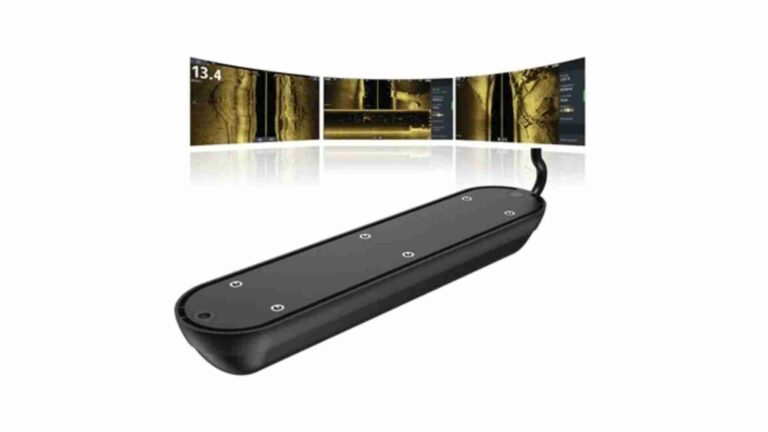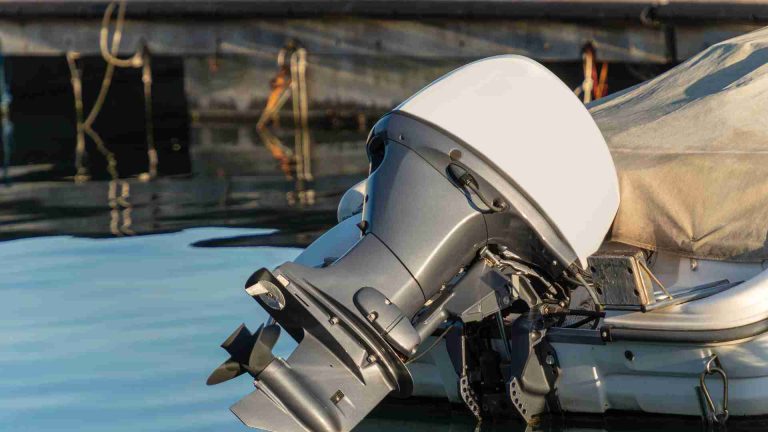What Size Are Boat Drain Plugs?
Boating, with its promise of aquatic adventures and the thrill of the open water, is a beloved pastime for many. Yet, behind the scenes of these maritime escapades lies a seemingly small but crucial component that plays a pivotal role in the safe and smooth operation of watercraft: the humble boat drain plug.
Boat drain plugs are not one-size-fits-all; they come in a variety of sizes and types to suit the diverse array of boats, from nimble kayaks to majestic yachts. These unassuming plugs serve a vital purpose, preventing water from infiltrating the boat’s interior and ensuring buoyancy. Without the right drain plug, even a minor water leak can turn a leisurely cruise into a nautical nightmare.
In this comprehensive guide, we will explore the world of boat drain plugs, diving deep into the nuances of sizes and types. We’ll uncover the significance of selecting the correct plug for your vessel, shedding light on this often overlooked but vital aspect of boating safety and enjoyment. So, whether you’re a seasoned sailor or a novice mariner, join us as we navigate the intricacies of boat drain plugs and their role in ensuring your aquatic adventures remain smooth sailing.
Primary Function of Boat Drain Plugs in Watercraft

Boat drain plugs are unsung heroes of watercraft, primarily serving one vital function: preventing the ingress of water into the boat’s interior. Watercraft, by design, have areas that can collect water, such as bilges or compartments, which need to be kept dry for safety, buoyancy, and comfort reasons. Drain plugs, when correctly fitted, seal these areas to prevent water from entering.
Choosing the right drain plug size for your boat is of paramount importance. An improperly sized plug can lead to leaks and compromise the vessel’s integrity, potentially causing accidents or damage. It’s not a one-size-fits-all scenario; the drain plug size must match the specific design and requirements of your boat.
The types of boats that require drain plugs vary widely. Smaller vessels like kayaks, canoes, and dinghies often have self-bailing systems that utilize drain plugs. Larger boats, including fishing boats, sailboats, and motorboats, may have multiple drain plugs to manage water in various compartments or bilge areas. So, whether you’re cruising on a small skiff or captaining a sizable yacht, understanding drain plugs and their correct sizing is essential for a safe and enjoyable boating experience.
Common Drain Plug Sizes Found in the Boating Industry
Boat drain plug sizes are typically standardized, making it easier for boaters to find suitable replacements when needed. The most common drain plug sizes in the boating industry are:
- 1/2 Inch: This size is commonly used for small boats, such as kayaks, canoes, and dinghies.
- 3/4 Inch: Often found in mid-sized vessels like fishing boats and recreational boats.
- 1 Inch: Larger boats, including sailboats and motorboats, often use this size for their drain plugs.
It’s essential to note that while these sizes are standard, there can be some variations and compatibility issues across different boat manufacturers. Therefore, it’s a good practice to check your boat’s specifications or consult your boat’s manufacturer to ensure you choose the correct drain plug size.
Here’s a table outlining common boat types and their corresponding drain plug sizes:
| Boat Type | Recommended Drain Plug Size |
| Kayaks, Canoes, Dinghies | 1/2 Inch |
| Fishing Boats | 3/4 Inch |
| Recreational Boats | 3/4 Inch |
| Sailboats, Motorboats | 1 Inch |
Please note that this is a general guideline, and variations can occur depending on your boat’s make and model. Always verify the correct drain plug size for your specific watercraft.
How to Determine the Correct Drain Plug Size for Your Specific Boat
Selecting the right drain plug size for your boat is crucial to ensure a secure fit and prevent water from entering. Here’s how to determine the correct drain plug size:
- Consult Your Owner’s Manual: Start by checking your boat’s owner’s manual or manufacturer’s specifications. Many boats will include information on the recommended drain plug size. This is often the most reliable source for accurate sizing.
- Contact the Manufacturer: If you can’t find the information in your owner’s manual, contact the boat manufacturer or visit their website. They should be able to provide you with the recommended drain plug size based on your boat’s make and model.
- Measure the Drain Hole: If you’re unable to obtain manufacturer recommendations, you can measure the drain hole diameter directly. Use a caliper or ruler to measure the inside diameter of the drain hole accurately. Be precise in your measurement.
- Consider Slightly Larger Sizes: When in doubt or if your measurement falls between standard sizes, it’s generally safer to choose a slightly larger drain plug. You can use an appropriately sized washer or gasket to ensure a tight fit.
- Test the Fit: After acquiring the drain plug, test its fit in the drain hole. It should fit snugly without any gaps. Ensure that it provides a watertight seal.
Remember that using the wrong drain plug size can lead to leaks and potential damage to your boat. When in doubt, always seek guidance from your boat’s manufacturer or a boating professional.
Materials Used to Manufacture Boat Drain Plugs
Boat drain plugs are available in various materials, each with its own set of advantages and disadvantages. Here’s an overview of the most common materials used in their construction:
- Stainless Steel: Stainless steel drain plugs are highly durable and resistant to corrosion, making them an excellent choice for saltwater and freshwater boats. They have a long lifespan and can withstand harsh marine conditions. However, they tend to be more expensive than other materials.
- Brass: Brass drain plugs are corrosion-resistant and durable, although not as much as stainless steel. They are often a more affordable option. However, their longevity can be reduced in saltwater environments, so regular maintenance is essential.
- Plastic: Plastic drain plugs are lightweight and cost-effective. They are suitable for freshwater use but may degrade over time when exposed to UV rays and saltwater. While they are less durable than metal options, they are readily available and easy to replace.
- Rubber or Neoprene: Rubber or neoprene drain plugs are often used with plastic housings. They provide a good seal and are resistant to water infiltration. However, they may wear out faster than metal plugs.
The choice of material should consider your boat’s environment and how often you plan to use it. Stainless steel is a top choice for durability in saltwater conditions, while brass is a good option for freshwater boating. Plastic drain plugs are suitable for occasional use or in freshwater environments. Regardless of the material, proper maintenance, and regular inspection are essential to ensure the drain plug remains effective and secure.
Proper Care and Maintenance of Boat Drain Plugs
Proper care and maintenance of boat drain plugs are essential to ensure they function correctly and prevent water from entering your vessel. Here are some maintenance tips:
- Regular Inspection: Periodically inspect your boat’s drain plug for signs of wear, damage, or corrosion. Look for cracks, loose parts, or any deterioration in the plug or its components.
- Cleaning: Clean the drain plug and its housing regularly to remove dirt, grime, and debris that may prevent a proper seal. Use freshwater or a mild detergent and a brush or cloth to clean the plug thoroughly.
- Lubrication: If your drain plug uses threads or moving parts, apply marine-grade lubricant to keep them functioning smoothly. This prevents corrosion and ensures easy removal and replacement.
- Replace O-rings: Some drain plugs have rubber O-rings or gaskets to create a watertight seal. Inspect these regularly for signs of wear or damage and replace them as needed.
- Check for Tightness: Before launching your boat, always ensure the drain plug is securely tightened to prevent water from entering the hull.
As for replacement, consider these factors:
- Signs of Wear: If the drain plug shows visible signs of wear, such as cracks or corrosion, or if it no longer creates a watertight seal, it’s time for a replacement.
- Age: Even with proper maintenance, drain plugs can deteriorate over time. Consider replacing your plug every few years, especially if you frequently use your boat.
- Materials: Depending on the material, some drain plugs may wear out faster than others. For example, plastic plugs may degrade more quickly than stainless steel.
- Environment: If you primarily boat in saltwater, you may need to replace drain plugs more frequently due to the corrosive nature of salt.
- Compatibility: When replacing a drain plug, ensure the new one matches the size and type recommended by your boat’s manufacturer. Consult your owner’s manual or contact the manufacturer for guidance.
Regular maintenance and timely replacement of boat drain plugs are crucial to maintain the integrity of your vessel and prevent unwanted water from entering. Always prioritize safety and take the necessary steps to keep your boat’s drainage system in good condition.
Weather and Seasonal Considerations
Environmental factors, especially temperature and water conditions, can indeed impact the performance of boat drain plugs. Here’s how to handle these considerations:
Temperature Variations:
- Freezing Temperatures: In areas where temperatures drop below freezing, it’s crucial to remove the drain plug before winter storage. If water inside the hull freezes, it can expand and cause significant damage. After removing the plug, allow any remaining water to drain completely.
- Extreme Heat: Prolonged exposure to extreme heat can cause certain drain plug materials, such as plastic or rubber, to deteriorate more quickly. Inspect the plug for signs of melting or warping, and replace it if necessary.
Water Conditions:
- Saltwater: In saltwater environments, corrosion can be a concern, particularly for metal drain plugs. Use corrosion-resistant materials like stainless steel to combat this issue. Regularly rinse the plug and surrounding areas with freshwater after saltwater use to minimize corrosion.
- Muddy or Debris-filled Waters: If you frequently navigate in muddy or debris-filled waters, your drain plug may accumulate sediment or debris. This can compromise the seal. Check and clean the plug more frequently under such conditions.
Winter Storage Precautions:
- Remove and Store: As mentioned, when storing your boat for the winter, remove the drain plug to prevent freezing-related damage. Store the plug in a dry, cool place, and make sure it’s clean and free of debris.
- Inspect Before Use: Before your first outing in the spring, thoroughly inspect the drain plug. Ensure it’s in good condition, and check that the threads, seals, and gaskets are intact.
Remember that different boats and regions may have unique considerations due to varying climates and conditions. Always follow the manufacturer’s recommendations for drain plug care and maintenance, and take precautions based on your specific circumstances to ensure the plug remains secure and effective.
Potential Risks and Consequences of a Missing or Malfunctioning Drain Plug While Out on the Water
A missing or malfunctioning drain plug can lead to several risks and consequences while out on the water, including:
- Flooding: Without a properly functioning drain plug, water can enter your boat’s hull. This can cause the boat to become unstable and potentially capsize, leading to a safety hazard.
- Weight Distribution: Accumulated water inside the hull can alter the boat’s weight distribution, making it difficult to control. This can affect maneuverability, especially in rough water conditions.
- Damage: Water entering the hull can damage electronic systems, engines, and other sensitive components. This damage may result in costly repairs.
Here’s what to do in case of a drain plug emergency:
- Immediate Action: If you notice a missing or malfunctioning drain plug while on the water, take immediate action to minimize the risk. Turn off any electrical systems or engines to prevent damage. Stay calm to make rational decisions.
- Temporary Solutions: 1. Plug the Hole: If possible, use a temporary plug or sealant to block the opening where the drain plug should be. Some boaters carry expandable foam or inflatable plugs for this purpose. 2. Bailing: If the water accumulation is minimal, you can manually bail out water using buckets, bilge pumps, or even containers. Be cautious and distribute weight evenly if you’re removing water while underway.
- Safety First: Prioritize safety at all times. If the situation becomes unsafe or unmanageable, call for assistance from authorities or fellow boaters.
- Carry Spare Drain Plugs: As a proactive measure, keep spare drain plugs onboard your boat. Ensure they are the correct size and type for your boat’s drain holes.
- Prevention: Regularly inspect your drain plug before every trip to ensure it’s in good condition and properly secured. This simple habit can help prevent drain plug emergencies.
In any drain plug emergency, safety should be your top priority. Being prepared with spare drain plugs and knowing how to handle such situations can help ensure you’re ready to respond effectively to protect yourself and your boat.
Legal Requirements or Regulations Related to Boat Drain Plugs

Boat drain plug regulations vary by location and are often tied to efforts to prevent the spread of invasive species. Here are some key points to consider:
- Invasive Species Prevention: Many regions have regulations requiring boaters to remove drain plugs from their vessels before leaving a water body. This helps prevent the spread of invasive species, which can harm local ecosystems. Some invasive species can attach to boats and trailers or hide in water systems, including ballast tanks.
- Compliance is Essential: It’s crucial to comply with these regulations. Failing to remove drain plugs or adhere to other invasive species prevention measures can result in fines and penalties.
- Boat Inspections: In some areas, authorities conduct boat inspections to ensure compliance with drain plug removal and other prevention measures. During these inspections, they may also check for any visible signs of invasive species on boats or trailers.
- Boat Wash Stations: Some regions provide boat wash stations where boaters can clean their vessels thoroughly, reducing the risk of transporting invasive species. Using these facilities is often encouraged or required.
- Local and Regional Variations: Regulations related to drain plugs and invasive species prevention can vary widely depending on your location. It’s essential to research and understand the specific rules in your area.
- Stay Informed: To stay informed about local and regional regulations, consult with local boating authorities, environmental agencies, or fish and wildlife departments. Many of these agencies provide information on their websites and may offer resources to help boaters comply with regulations.
- Educational Programs: Some regions also offer educational programs and materials to raise awareness about invasive species prevention and responsible boating practices.
In summary, compliance with drain plug regulations is essential not only to avoid legal issues but also to protect the environment and aquatic ecosystems. Staying informed about local regulations and taking proactive steps to prevent the spread of invasive species is a responsibility that all boaters share.
Watch Drain Plug PSA | Video
Top 5 FAQs and answers related to What Size Are Boat Drain Plugs
What Size Drain Plug Does My Boat Need?
What Are the Common Drain Plug Sizes for Boats?
Can I Use a Larger Drain Plug if I Can’t Find the Exact Size?
What Material Is Best for Boat Drain Plugs?
Do I Need to Replace My Boat’s Drain Plug Periodically?
Conclusion

In conclusion, selecting the correct boat drain plug size is a fundamental aspect of responsible boating. This article has illuminated the significance of this seemingly small component and provided valuable insights into the factors to consider when choosing, maintaining, and replacing drain plugs.
Remember that boat drain plugs play a pivotal role in preventing water ingress and ensuring the safety of your vessel. Using the wrong size or neglecting maintenance can lead to unexpected complications while out on the water.
As responsible boat owners, it’s crucial to measure your drain hole accurately or consult your boat’s manual for size recommendations. Regular inspection, cleaning, and replacement when needed are key to ensuring your drain plug functions optimally.
Above all, prioritize compliance with local regulations, especially those related to invasive species prevention. By adhering to best practices and taking care of your boat’s drain plug, you can enjoy worry-free and enjoyable boating experiences for years to come.
Share What Size Are Boat Drain Plugs? with your friends and Leave a comment below with your thoughts.
Read Black Drum vs Sheepshead – What’s the Difference? until we meet in the next article.





